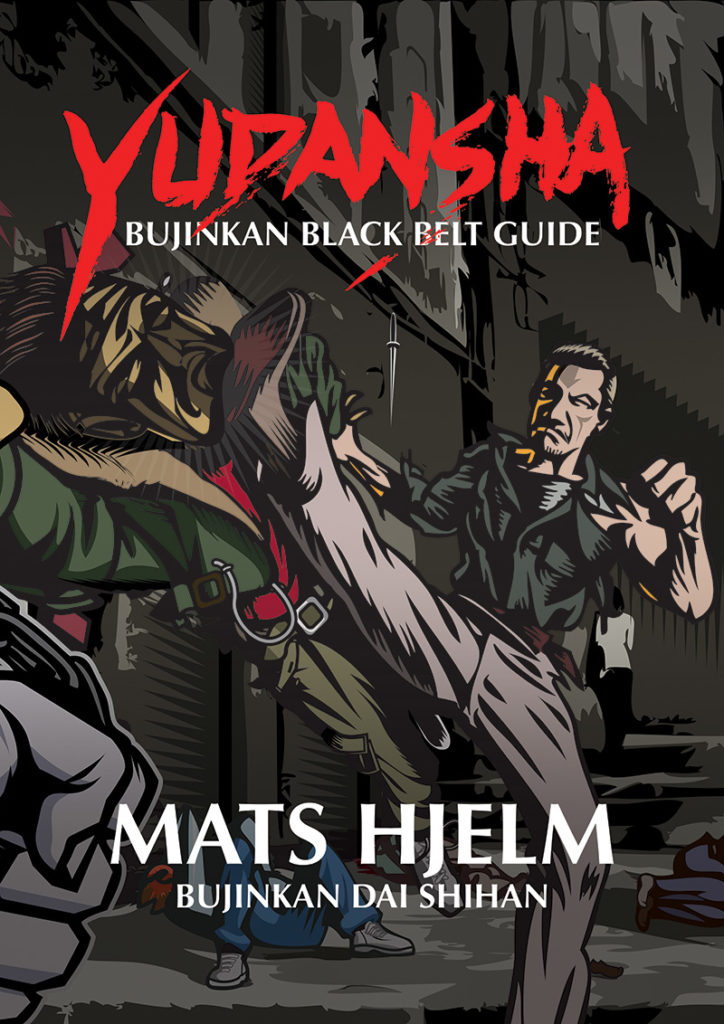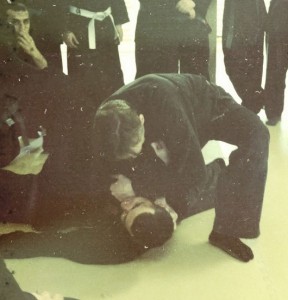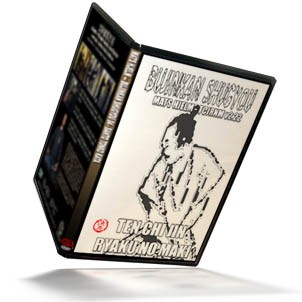YUDANSHA BOOK by MATS HJELM
From YŪDANSHA NO AN'NAISHO by YŪDANSHA NO AN'NAISHO
 武神館有段者の案内所
武神館有段者の案内所
YUDANSHA – BUJINKAN BLACK BELT GUIDE
Prints in 3-5 business days
Click button below to order
English, Perfect-bound Paperback, 184 pages richly illustrated with pictures and illustrations. (32 483 Words, 145 533 Characters)
This book is a comprehensive guide to understand the Taijutsu of the Bujinkan system as taught by Masaaki Hatsumi Soke. We have this concept of Shu-Ha-Ri which is three major processes to learn Budo. First, we learn the fundamentals, then how to break them up. Then you transcend to a state where you are totally free without even thinking of what you are doing. Needless to say, you can’t get to the last stage without knowing the first stage well. It is said that you should study each level for at least 10 years. This book is all about the first stage we call Shu. It is further divided into three levels.
- 天略の巻 TEN RYAKU NO MAKI (The scroll of Heaven)
- 地略の巻 CHI RYAKU NO MAKI (The scroll of Earth)
- 人略の巻 JIN RYAKU NO MAKI (The scroll of Man)
About the Author: Mats have been training Bujinkan Budo-taijutsu since the early 1980’s. He travelled all around the world to train and teach Bujinkan Budo-taijutsu. http://YudanshaBook.com
Print details: 8.26″ x 11.69″ (EU Standard A4), perfect binding, white interior paper (60# weight), black and white interior ink, white exterior paper (90# weight), full-color exterior ink.
BACKGROUNDThank you for your interest in Bujinkan Budō-taijutsu!
This is not a self-study course, it is really necessary for you to have a qualified instructor to help you. The purpose for this book is to be a tool to help your progress. You will learn names and principles here, and the correct movements from an instructor that can point out bad angles, distance, timing etcetera.
This is a collection of techniques I think black belts in the Bujinkan system should at least be familiar with, and teachers should know by heart.
The layout of the techniques here is from Ten-Chi-Jin Ryaku no Maki, Shidōshi scrolls. Togakure-ryū Ninpō-taijutsu, an out of print book, and numerous publications and videos by Hatsumi Sōke.
This is not an official Bujinkan guide line, book, study material or what you want to call it. It is something I worked on for 35 years and ongoing, it is my legacy to my students. If other teachers want to endorse it or follow it, thank you! If someone doesn’t agree, that’s fine to, by all means release your own better version. This was made to students and friends from many nationalities that bought my videos, attended my seminars and showed interest in my way of teaching over the years.
Mats Hjelm
This book has been an ongoing project by Mats Hjelm at Kaigozan Dojo for 35 years, now it is time to release it publicly in English as version 3.0.







 The food in Turkey is excellent, I especially like
The food in Turkey is excellent, I especially like 